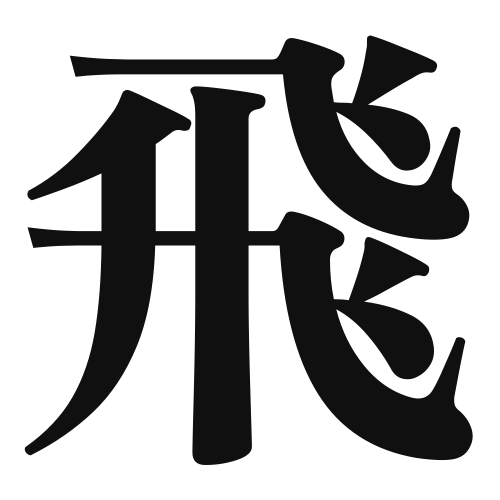1. Overview of Meaning
The kanji “飛” (hi) means “to fly” or “to leap.” It conveys the idea of movement through the air, often associated with birds or aircraft.
2. Formation and Radical
Formation of the Kanji: The kanji “飛” is a phono-semantic compound (形声文字), which means it combines a phonetic component with a semantic component. The left part suggests the sound, while the right part relates to the meaning of flying.
Radical: The radical for “飛” is “飛” itself, which is also the entire character. It is categorized under the radicals related to movement and action.
3. Examples of Usage
Common Words and Phrases:
- 飛行機 (hikouki) – airplane
- 飛ぶ (tobu) – to fly
- 飛び跳ねる (tobihaneru) – to jump or leap
Example Sentences in Daily Conversation:
- 鳥が空を飛んでいる。 (Tori ga sora o tonde iru.) – The bird is flying in the sky.
- 彼は高く飛び跳ねた。 (Kare wa takaku tobihaneta.) – He jumped high.
4. Synonyms and Antonyms
Similar Kanji:
- 翔 (shou) – to soar, often used in a poetic context, emphasizing grace in flight.
- 舞 (mai) – to dance, which can also imply a light, airy movement but is more focused on elegance rather than just flying.
Antonyms:
- 落ちる (ochiru) – to fall, which is the opposite of flying or ascending.
- 地面 (jimen) – ground, representing a stationary position as opposed to the action of flying.
5. Cultural and Historical Background
Relation to Japanese Culture: The concept of flying is often celebrated in Japanese culture, symbolizing freedom and aspiration. The image of cranes flying is particularly significant, representing longevity and good fortune.
Proverbs and Idioms:
- 飛ぶ鳥を落とす勢い (tobu tori o otosu ikioi) – “The momentum to knock down a flying bird,” meaning to have great power or influence.
- 飛び込む (tobikomu) – “to jump in,” often used in contexts of taking bold actions or making sudden decisions.
